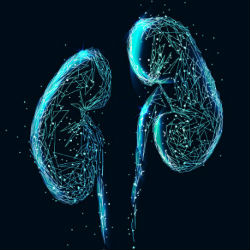Spike Patterns May Help Identify Networks Generating Epileptic Seizures
Patients with epilepsy can spend days or even weeks undergoing highly invasive pre-surgical evaluation. The procedure involves surgically implanting electrodes into the brain and waiting for a seizure to occur.
“Imagine if a patient could go from weeks of invasive monitoring to just a half hour of recording,” said Samuel B. Tomlinson, a fourth-year medical student at URMC.
Tomlinson and his mentor, Eric D. Marsh, M.D., Ph.D., associate professor of Neurology and Pediatrics at the Children's Hospital of Philadelphia, study interictal spikes – electrical activity that occurs between seizures and could help identify seizure origin without the long wait.
Marsh and Tomlinson have published a series of research papers on this subject since 2012, when Tomlinson was an undergraduate student at Swarthmore College. Their latest research, which was funded by the UR CTSI through its Academic Research Track Program and appeared in Epilepsia, explored the long-term reproducibility and stability of interictal spike patterns over time.
Using invasive electroencephalography (EEG) recordings captured from the surface of the cortex, the latest research focused on a key question: Can electrical recordings of the brain identify the networks generating epileptic seizures?
Analyzing the EEGs of 12 children with refractory epilepsy enabled the researchers to determine that interictal spikes propagate through highly reproducible trajectories across the epileptic cortex. “We believe that these trajectories contain information about the underlying circuitry of the patient’s seizure network,” Tomlinson said. “In particular, our results suggest that connections between brain regions are polarized to favor the spread of epileptic activity in one direction over another.”
“During the past year’s research, we found that spike propagation patterns are incredibly stable, which tells us that the network underlying them has certain fixed properties,” Marsh added. “Local spike modules all have a pattern among themselves, which relate to triggering an epileptic seizure.”
What’s next?
Marsh and Tomlinson see their latest research on interictal spikes as an extension of their long-term effort to understand the pathophysiological mechanisms of seizures. In fact, with the ink dry on that study, they are in the process of preparing two additional manuscripts. One of these papers will look at the interconnectivity between smaller, sub-level networks and the bigger networks within which they reside.
For Tomlinson, this project is the latest evolution of his interest in translational research that improves the surgical approach to epilepsy. He plans to continue this work during his journey to become an academic neurosurgeon.
###
Tomlinson's study was supported by the UR CTSI's Academic Research Track Program under the University of Rochester CTSA award number TL1 TR002000 from the National Center for Advancing Translational Sciences of the National Institutes of Health. The Academic Research Track Program allows first, second and third year medical students to take a “year out” from their medical training to gain research experience.
Michael Hazard | 8/19/2019



